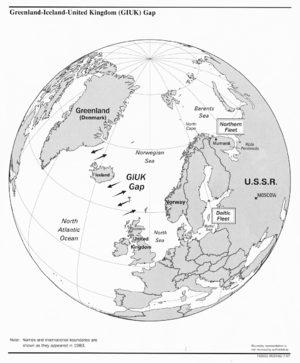
SOSUS, an acronym for sound surveillance system, is a chain of underwater listening posts located around the world in places such as the Atlantic Ocean near Greenland, Iceland and the United Kingdom—the GIUK gap—and at various locations in the Pacific Ocean. The United States Navy's initial intent for the system was for tracking Soviet submarines, which had to pass through the gap to attack targets further west. It was later supplemented by mobile assets such as the Surveillance Towed Array Sensor System (SURTASS), and became part of the Integrated Undersea Surveillance System (IUSS).
SOSUS development was started in 1949 when the US Navy formed the Committee for Undersea Warfare to research anti-submarine warfare. The panel allocated $10 million annually to develop systems to counter the Soviet submarine threat consisting primarily of a large fleet of diesel submarines. They decided on a system to monitor low-frequency sound in the SOFAR channel using multiple listening sites equipped with hydrophones and a processing facility that could detect submarine positions by triangulation over hundreds of miles.